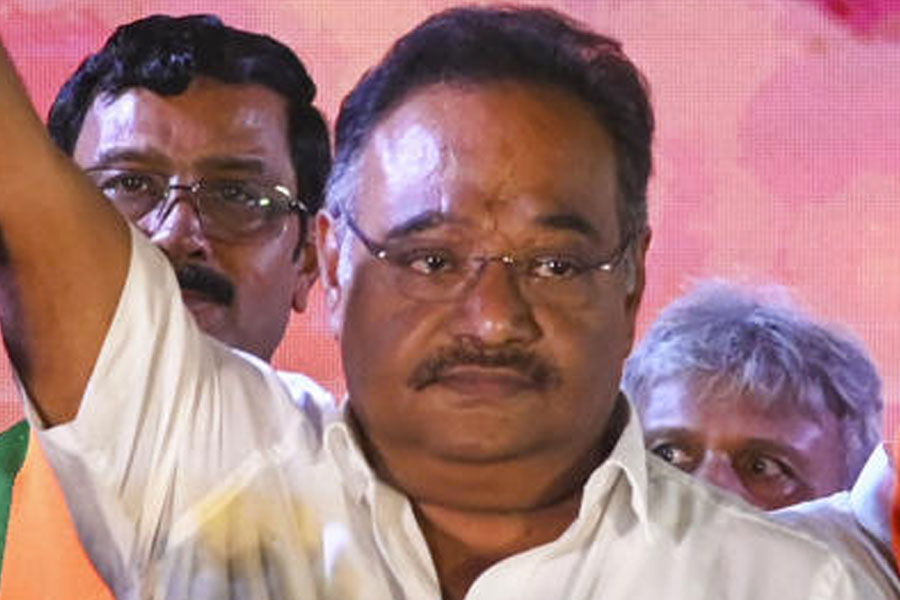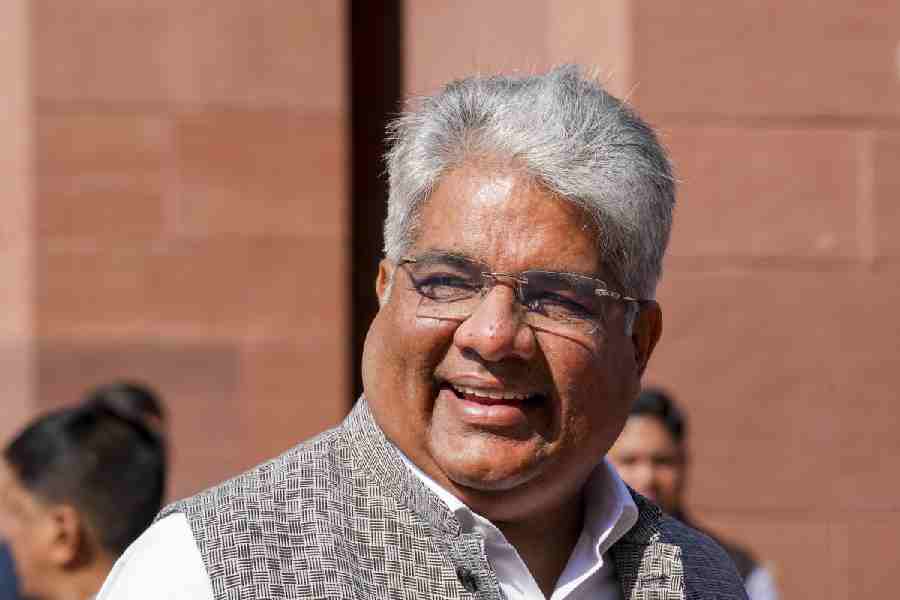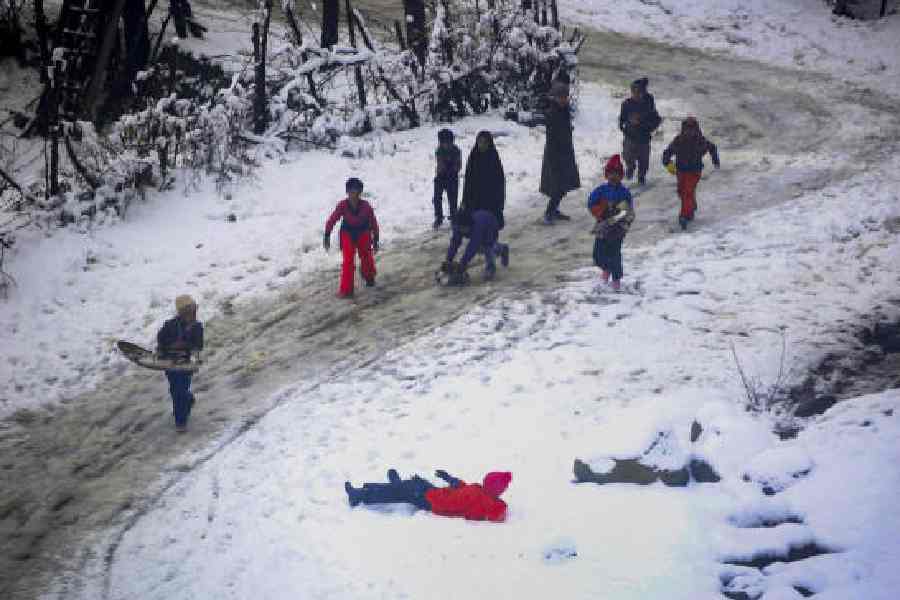HOW GREEN IS OUR VALLEY, MR TATA
 |
| Ratan Tata in Calcutta on Wednesday and how a Rajarhat stretch would look if he comes visiting in winter. Picture above was taken in 2013 |
 |
Calcutta, Aug. 6: If chief minister Mamata Banerjee is scouting for a brand ambassador for Bengal tourism before she takes the flight to Singapore in less than a fortnight, the best candidate was in Calcutta today.
“It’s been two years since I have been to Calcutta and it was Rajarhat particularly which I was driven through. (There has) been unbelievable change in terms of building and development but it still looks like a countryside under development,” Ratan Tata told a session at the Ladies Study Group, a wing of the Indian Chamber of Commerce, in the city.
Then came an observation that will probably make him an unsuitable candidate to promote Mamata’s Brand Bengal.
“There is a great deal of movement both commercial and residential but you don’t see that much sign of industrial development,” Tata said in response to a question on the changes he saw in Bengal since he pulled out of Singur.
The chairman emeritus of Tata Group appears to have recounted what he took in after personally flying a Falcon 2000 to Calcutta and riding past Rajarhat on his way to the city from the airport.
But his comments came a day after the Bengal government unveiled an urban policy that seeks to promote more construction.
On Facebook, the chief minister has also been listing the accomplishments on the industrial front, which Tata appears to have missed.
Considering Trinamul’s skills at turning adversity into advantage, the party might argue that Tata was actually paying a compliment by saying that the new township “still looks like a countryside under development”. The chief minister is an admirer of the verdant sights that bucolic Bengal offers and often speaks of the state’s rich tourism potential.
But few aspiring investment destinations are likely to describe themselves as “a countryside under development”. Even though a part of Rajarhat has been earmarked for industry, especially information technology, the response from investors is yet to match expectations.
For the record, Trinamul refused to comment on Tata’s statements.
In response to another question, Tata not only defended his decision to pull out of Singur but also said the shift affected the viability of the Nano.
“If we had to go through that again I would do it the same way, just sit down and re-state what I said on television, which my sisters decried me for saying, namely that if you hold a gun to my head, either you pull the trigger or take the gun away, I will not move my head,” he said amid loud applause.
But much of the excitement generated during the launch of Nano died down because of the one-year delay that the shift caused, he added.
“The year we lost in moving from Singur to Sanand, much of the excitement died with it…. So, in hindsight, we could not operate in hostile environment but, on the other hand, we really did lose the excitement in the market place that affected its longer-term market,” Tata said.
Trinamul did not comment but an industrialist, who was not at the event but was aware of Tata’s replies, said: “Tata vented his frustration. I interpret his words as “amakeo korte dilena, nijeo kichhu korle na (neither have you allowed me to do it nor have you done anything).”
Tata thanked Narendra Modi for giving the Nano a “home” in Gujarat.
Asked to choose the best place in the world to do business, Tata picked Singapore. There was no indication that he was aware Singapore is on Mamata’s itinerary later this month.
Bon voyage, chief minister.
FEAR OF CHAOTIC URBANISATION
 |
Balkrishna Vithaldas Doshi, 86, is the grand old man of architectural discourse in India. In the early 1950s he had worked in Paris under Le Corbusier, regarded as the father of modern architecture. Known as an institution builder, Doshi is a Fellow of the Royal Institute of British Architects and is based in Ahmedabad.
When The Telegraph sought his views on the new FAR-driven building rules in Bengal, Doshi shared his apprehensions
• It is premature and unwise to decide on generalising bylaws without knowing the inherent quality of a city and city heritage and other virtuous characteristics of lifestyle
• Besides, when any bylaw is made to change the density or height or regulation of a building, it is necessary to prepare a three-dimensional model of the existing condition of the area to be developed
• It is essential to know the nature of traffic generation since the roads may not be capable of carrying additional burden of traffic as well as infrastructure and services
• If the proposal is randomly and broadly implemented, one is going to see a rise in chaotic and harmful urbanisation
• Besides, those who stay in existing buildings may have their constraint of paying rent in relation to their income and the new proposals will be unaffordable
• Properly planned and laid out urban design models in relation to particular sectors or sections to assess the value of the existing characteristics of the area to preserve heritage on one side and to create new development means marrying the old and new together so that they are congenial for existing and new lifestyles
• Cities are made for people and they must enjoy bonhomie of community, celebrating togetherness for which Bengal is known.
As told to Soumitra Das










